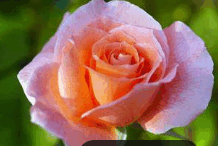https://hnr.k-state.edu/extension/info-center/newsletters/index.html
Blog Post: http://www.ksuhortnewsletter.org
Video of the Week: High Quality Grass Seed: Worth the Extra Expense
https://kansashealthyyards.org/all-videos/video/high-quality-grass-seed-worth-the-extra-expense
REMINDERS
1. Transplant cabbage, broccoli and cauliflower to their final location.
2. Plant salad crops such as lettuce, radishes, spinach, turnips, mustard and other greens from mid-August to early September for a fall harvest.
3. Harvest vegetable crops on a regular basis for season long production
TURFGRASS
Kentucky Bluegrass Variety Selection for Cool-Season Lawns
Though Kentucky bluegrass is not as heat and drought tolerant as tall fescue and the warm-season grasses, it is commonly used in northeastern Kansas where there is sufficient annual rainfall. It is also grown under irrigation in northwestern Kansas where the higher elevation allows for cooler summer night temperatures.
Recommended cultivars for high-maintenance lawns and low-maintenance lawns differ. High quality lawns are those that have irrigation to prevent stress and receive at least 3 fertilizer applications per year.
Lawns under a low-maintenance program may provide limited watering and fertilization.
Instead of the 4 to 5 pounds of nitrogen per 1,000 square feet per year typical of high-maintenance turf, a low-maintenance program would include 1 to 2 pounds of nitrogen per 1,000 square feet per year. Obviously, a low-input lawn will not be as attractive as a higher-input lawn, but you can expect the cultivars listed above to look fairly good in the spring and fall, while going dormant in the summer. A listing of both high-maintenance and low-maintenance cultivars can be found at https://tinyurl.com/zh456xvv (Ward Upham)
Recommended Tall Fescue Cultivars
Though several cool-season grasses are grown in Kansas, tall fescue is considered the best adapted and is recommended for home lawns. The cultivar K-31 is the old standby and has been used for years. However, there are a myriad of newer cultivars that have improved color, density and a finer leaf texture. Most of these newer varieties are very close to one another in quality.
Each year the National Turfgrass Evaluation Trial rates tall fescue varieties for color, greenup, quality and texture. Quality ratings are taken once a month from March through October. The cultivars listed at https://tinyurl.com/zh456xvv are on our recommended list. There are many more that rated nearly as well and should be considered worthy of consideration. See https://tinyurl.com/2pp59c6d for a complete list of all cultivars trialed. Note that K-31 consistently rates at the bottom. Keep in mind that blends of several varieties may allow you to take advantage of differing strengths.
Though K-31 may still be a good choice for large, open areas where weeds and a lighter green color can be tolerated, the new cultivars will give better performance for those who desire a high-quality turf. (Ward Upham)
FRUIT
Pear Harvest
Most pear cultivars should not be allowed to ripen on the tree. They should be picked while still firm and ripened after harvest. Tree-ripened fruits are often of poor quality because of the development of grit cells and the browning and softening of the inner flesh. Pears ripen from the inside out and waiting until the outside is completely ripe will often result in the interior of the fruit being mushy and brown.
Commercial growers determine the best time to harvest pears by measuring the decrease in fruit firmness as the fruit matures. This varies with growing conditions and variety. A Magness meter is used for testing and measures the pressure needed to push a 5/16-inch tip a specified distance into an individual fruit. Home gardeners can use these other indicators:
1. A change in the fruit ground color from a dark green to light green or yellowish green. The ground color is the “background” color of the fruit.
2. Fruit should part easily from the branch when it is lifted up and twisted.
3. Corking over of lenticels. Lenticels are the “breathing pores” of the fruit. They start out as a white to greenish white color and turn brown due to corking as the fruit nears maturity. They look like brown “specks” on the fruit.
4. Development of characteristic pear aroma and taste of sampled fruit.
Pears will actually be of higher quality if they are cooled immediately after harvest. Temperatures between 31 and 50 degrees will work with the warmer temperatures actually reducing the amount of chilling needed. Just don’t go over 50 degrees. Homeowners may want to use a refrigerator, if possible. The amount of chilling required varies by cultivar from 2 days to several weeks.
Pears ripen in one to three weeks after being removed from storage if held at 60 to 65 degrees F. They can then be canned or preserved. If you wish to store some for ripening later, fresh-picked fruit should be placed in cold storage at around 31degrees F and 90 percent humidity. Placing fruit in unsealed gallon plastic bags can provide the necessary humidity.
Ripen small amounts as needed by moving them to a warmer location and holding them at 60 to 65 degrees F. Ripening at too high a temperature (75 degrees F and higher) may result in the fruit breaking down without ripening. (Ward Upham)
TREES
Tubakia Leaf Spot of Oaks
This leaf spot disease of oak is starting to appear. Members of the red oak group are more likely to be affected than those in the white oak group, but members of both groups are showing symptoms. Red oaks often have distinct round spots as well as dead areas that follow the veins.
White oaks also have the dead areas that follow the veins and large blotches of dead tissue but lack the distinct spots. Leaves severely damaged may drop. However, trees rarely lose enough leaves to harm the health of the tree. No fungicide sprays are recommended. (Ward Upham)
VEGETABLES
Harvesting Winter Squash
Summer squash such as zucchini and scallop are harvested while immature but winter squash such as acorn, hubbard and butternut are harvested later, in the mature stage, after the rind is tough and seeds have developed. We normally think September is the time that winter squash are harvested. Harvesting too early leads to fruit that shrivels and rots.
There are two main characteristics that help tell us when winter squash are mature: color and rind toughness. Winter squash change color as they become mature. Butternut changes from light beige to deep tan. Acorn is a deep green color but has a ground spot that changes from yellow to orange when ripe. Gray or orange is the mature color for hubbard.
A hard, tough rind is another characteristic of mature winter squash. This is easily checked by trying to puncture the rind with your thumbnail or fingernail. If it easily penetrates the skin, the squash is not yet mature and will lose water through the skin — causing the fruit to dry and shrivel. Also, immature fruit will be of low quality. The stem should also be dry enough that excessive water doesn’t drip from the stem.
Winter squash should be stored cool with elevated humidity. Ideal conditions would be 55 to 60 degrees F and 50 to 70 percent relative humidity. Under such conditions, acorn squash will usually last about 5 to 8 weeks, butternuts 2 to 3 months and hubbards 5 to 6 months. (Ward Upham)
MISCELLANEOUS
Composting: Choosing a Bin
Though raw organic materials will eventually compost if given moisture and access to the microorganisms that break organic materials down, building a compost pile can greatly speed up the process. Also, a properly constructed compost pile will produce enough heat to destroy insect pests and disease organisms.
A number of things are needed for building a compost pile including a bin, a source of water, “green” materials and “brown” materials. This week we will cover bins.
Our goal is to have a bin that will hold at least a 3 foot x 3 foot x 3 foot high mound of material. Anything less than this and the process will be slow and will not produce sufficient heat to kill insect and disease pests. For home gardeners, a 5 x 5 x 5 bin would be about the largest that can be easily handled. Though there are a number of compost bins that can be purchased, gardeners can build their own. A simple bin can be made from discarded pallets or a ring of woven wire. Plans are available for a variety of bins at https://extension2.missouri.edu/g6957 . You may want to consider having a 3 bin system which consists of a holding bin to hold materials until enough materials have been collected to compost, a composting bin for a actual compost process and a third bin to hold the finished compost. For a video on choosing a bin, see https://bit.ly/2AwhCPy.. (Ward Upham)
Contributors: Ward Upham, Extension Associate
Division of Horticulture
1712 Claflin, 2021 Throckmorton
Manhattan, KS 66506
(785) 532-6173
For questions or further information, contact: wupham@ksu.edu OR cdipman@ksu.edu
This newsletter is also available on the World Wide Web at:
http://hnr.k-state.edu/extension/info-center/newsletters/index.html
The web version includes color images that illustrate subjects discussed. To subscribe to this newsletter electronically, send an e-mail message to cdipman@ksu.edu or wupham@ksu.edu listing your e-mail address in the message.
Brand names appearing in this newsletter are for product identification purposes only. No endorsement is intended, nor is criticism implied of similar products not mentioned.
K-State Research and Extension is committed to making its services, activities and programs accessible to all participants. If you have special requirements due to a physical, vision or hearing disability, or a dietary restriction please contact Extension Horticulture at (785) 532-6173.
Kansas State University Agricultural Experiment Station and Cooperative Extension Service K-State Research and Extension is an equal opportunity employer. Issued in furtherance of Cooperative Extension Work, Acts of May 8 and June 30, 1914, as amended. Kansas State University, County Extension Councils, and United States Department of Agriculture Cooperating, Ernie Minton, Dean.





